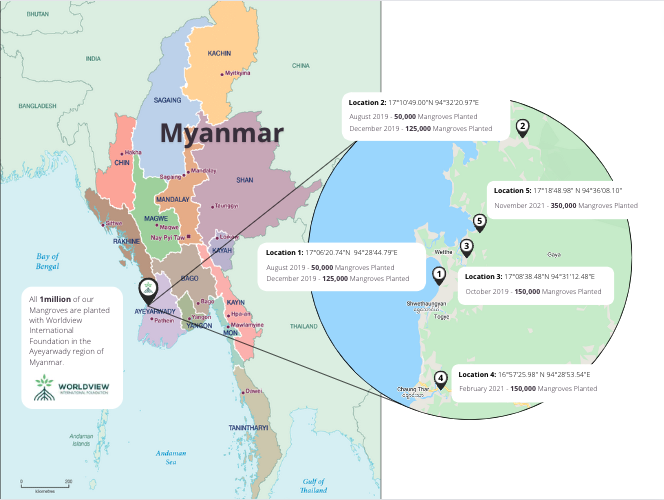When researching mangrove sequestration online, you may notice that the exact amount of CO2 mangroves sink varies from report to report. There are many reasons for this variation; Different scientific methodologies, studies focusing on different mangrove species or locations, the inclusion or exclusion of soil carbon content. The list goes on.
Commonly, environmental research projects find new data and use new methodologies regularly. Importantly carbon sequestration has gained more attention and scientific research has increased. Developing and evolving our understanding of mangroves.
But while reports may differ in their exact results, there is one thing they do agree on… Mangroves and Blue Carbon ecosystems are some of the most effective ways to draw down atmospheric carbon.
Up until 2021 Starboard have based our Mangrove planting on studies carried out by Pathein University and Yangon University. These studies reported that over the first 20 years of a Mangrove tree’s life 1 tonne of carbon dioxide is sequestered and stored within the tree and surrounding soil. We planted our first 500,000 mangroves to offset our emissions based on these numbers.
In 2021 Starboard began planting Mangroves under the Verified Carbon Standard. Meaning our mangroves now have their carbon sequestration officially recognised in the form of carbon credits. These credits are split 50/50 between Starboard and the Worldview International Foundation’s Livelihoods Program. Where they will fund and support the local communities protecting and planting the Mangroves.

